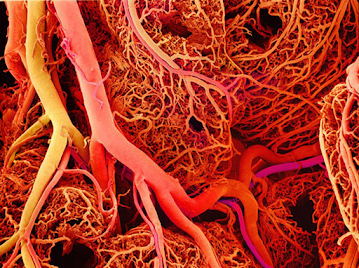The human body is a complicated machine, requiring many cycles to effectively work. To keep these urgent cycles running with practically no hitches, indispensable components and parts should be conveyed to the different pieces of the body.
This job of transportation is embraced by the human circulatory framework, moving fundamental supplements and minerals all through the body and metabolic byproducts from the body. The following is a flawless marked Circulatory framework outline.
An organization of organs that permit the dissemination of blood all through the body is otherwise called the cardiovascular framework or vascular framework. The imperative capacity of the circulatory framework is to move blood to all pieces of the body, which is critical in light of the fact that it conveys supplements, oxygen, carbon dioxide, chemicals, and platelets that are expected for sustenance and development of the cells of each organ.
It is a shut organization comprising four significant parts:
- The heart
- Blood
- Blood vessels
DOUBLE CIRCUIT
It comprises 2 circuits that heft blood around.
- The more modest being the pulmonary circuit which runs between the heart and the lungs,
- and the bigger is the systemic circuit which runs between the heart and the fringe tissues.
FUNCTION
Elements of the circulatory framework are done by furnishing the tissues of the body with oxygen and supplements which are moved in the blood. The pulmonary circuit conveys the deoxygenated blood into the lungs where the trading of oxygen and carbon dioxide that the body has created happens before the blood gets once again to the heart. The heart then siphons the recently oxygenated blood around the fundamental circuit of the body and conveys the oxygenated blood to the tissues prior to gathering the deoxygenated blood and sending it back to the heart with unused supplements and metabolic side effects. These waste materials are inside the blood channel into the liver.
HEART
The heart is a muscle that goes about as a pump. Through electrostimulation, it beats and pushes the blood around the whole body through the circulatory framework.
Chambers
The heart is contained 4 chambers that comprise 2 sets on the left and right sides of the heart.
- 2 atria
- 2 ventricles
The atria gather blood getting back to the heart while the ventricles siphon blood out of the heart. The valves in the heart forestall the discharge of blood into the offices of the heart.
The solid septum splits the 2 areas of the heart making a left and right side each containing one chamber and one ventricle.
Deoxygenated blood is pumped by the right half of the heart while the left side siphons oxygenated blood. How much blood in liters is siphoned out of the heart each moment is known as the cardiac output, which is around 5.6 liters in guys and 4.9 liters in females. It tends to be determined by duplicating the pulse which is the number of beats each moment by the stroke volume which is how much blood that gathers in the ventricles when they are at the full limit and going to contract. The cardiovascular result differs relying upon whether the individual is practicing or resting.
BLOOD VESSELS
There are 3 significant classes of veins in particular atria, veins, and capillaries.
- Atria transport blood between the tissues and away from the heart and have thick solid dividers with little interior lumina or paths that can endure blood under high tension.
- Veins divert blood from the tissues and towards the heart and have dainty dividers. Their interior lumen is bigger than that of the conduits because of the way that they contain blood under low tension. They additionally have valves that keep the blood from streaming in reverse.
- Ultimately, the capillaries, which are found in the muscles and the lungs, are tiny and have a one-cell layer of thick endothelial covering. All in all, the dividers of the vessels have the width of one single epithelial cell. They have extremely low strain because of the way that it will move increasingly slow trade gets an opportunity to occur.
This is additionally where the trading of gases, water, supplements, and side-effects happens on the grounds that the slim dividers are meager and fenestrated. After this, the vessels gather into venules that are identical to arterioles and fenestrated. Vessels associate arterioles and venules.
BLOOD COMPONENTS
The blood is comprised of 4 significant parts.
- The plasma is the liquid that encompasses the platelets and helps transport carbon dioxide, chemicals, and metabolic byproducts.
- Red blood cells which are otherwise called erythrocytes are framed in the bone marrow and capacity fundamentally as oxygen transporters.
- The body's safe framework is comprised of white blood cells or leukocytes which assume their part by creating antibodies and obliterating unsafe microorganisms. These cells are likewise made in the bone marrow.
- In conclusion, platelets are cells that cluster together to shape blood clumps and assist with safeguarding the body by forestalling dying.













0 Comments